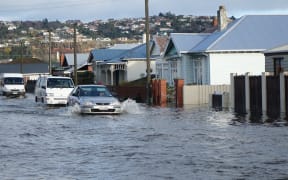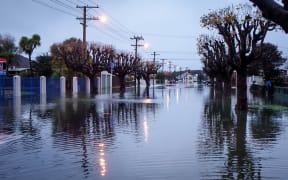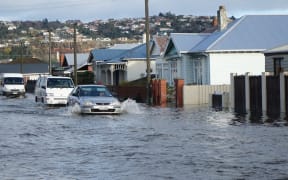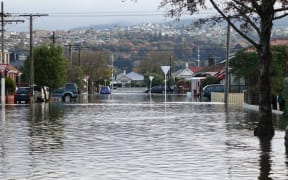
One of the potential options involves using open spaces, parks, carparks and reserves as areas to direct and store floodwaters in a bid to protect other areas from flooding. Photo: Supplied / Dunedin City Council
Banning new developments, managed retreats, ground strengthening and creating more water storage are among the 16 possible options unveiled to help South Dunedin face future hazards.
The densely populated, low-lying area is home to more than 13,000 people and is predicted to become more at risk from climate change, flooding and rising groundwater in the coming decades.
The Dunedin City Council and Otago Regional Council have been working together to respond and support the region to adapt.
South Dunedin Future has released a list of 16 potential approaches to help the area adapt, running the gamut from protecting, avoiding, and retreating, to accommodating the impacts.
It will be discussed by both councils next week, with councillors being asked to approve the list for community consultation.
That feedback would then feed into the next stage of technical work, honing in on specific solutions for different areas.
Programme manager Jonathan Rowe said this long list was a major milestone with the options aimed to make South Dunedin both safer and a better place to live.
Managed retreat was a possible option with a more reactive approach also being considered if disaster struck and residents could not return home.
While he wanted to avoid going down the reactive retreat route, he said it remained on the table because it could be necessary in the future and the councils and community needed to prepare for that possible reality.
He preferred managed relocation which looked at problem areas, and moved people out of harm's way before that was an issue.
Options to ban developments in high-risk areas or to make the building rules stricter to reduce exposure and vulnerability were also being considered, as were protection schemes including drainage, better water storage or designing areas like parks and roads to flood and direct water away from other areas.
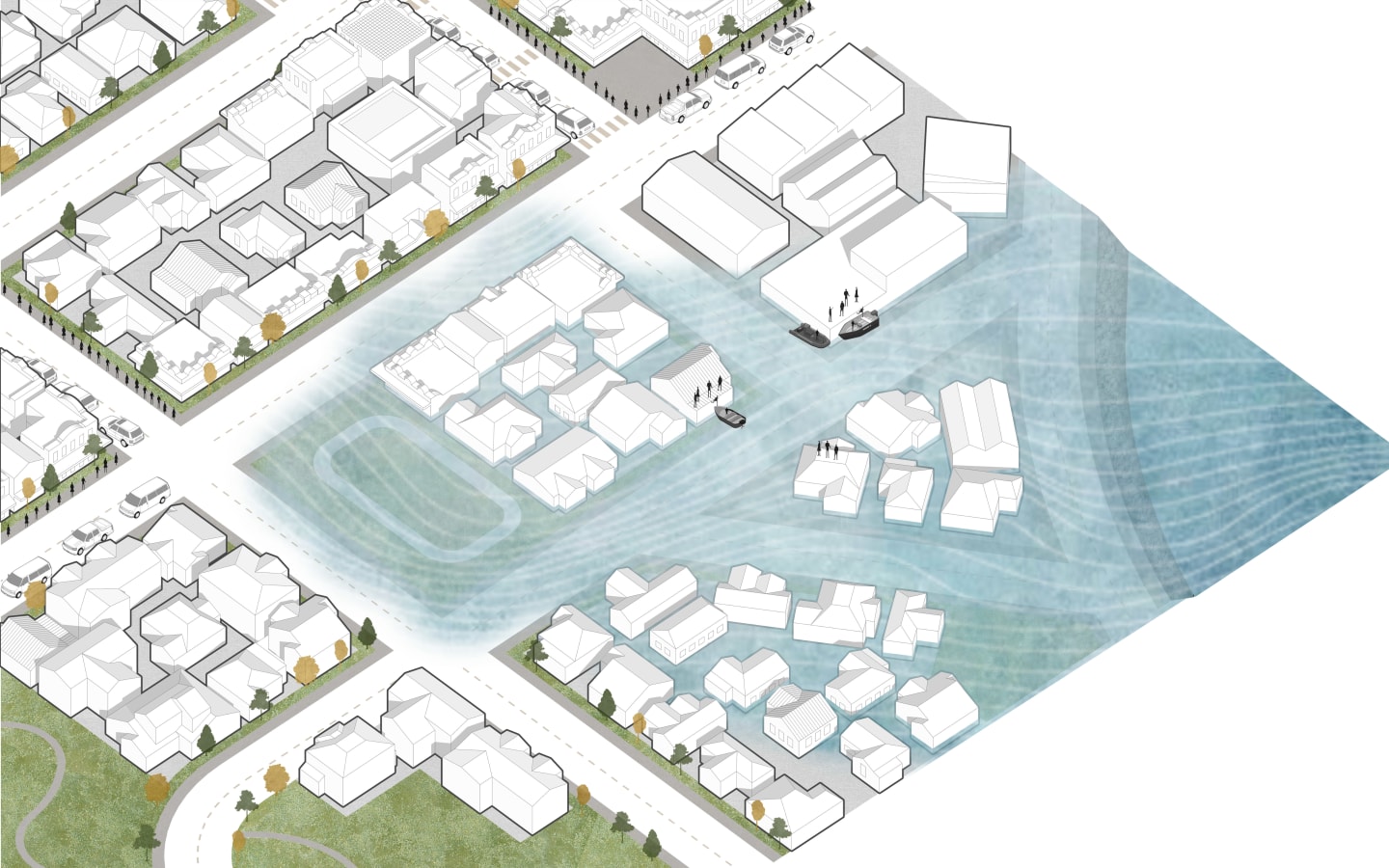
South Dunedin Future programme manager, Jonathan Rowe, said he wanted to avoid reactive retreat where residents were unable to return home because it was deemed too risky after a natural disaster. Photo: Supplied / Dunedin City Council
Ground strengthening, lifting or waterproofing houses, or building up the land - a method used in the reclaimed coastal wetland over the past 150 years - were also possibilities.
The councils were exploring options to make room for water that had nowhere to naturally escape rather than pushing it out and reclaiming the land.
"We need to figure out where does that water go. We want to find spaces for that that aren't in people's living rooms, aren't in people's garages so when it floods, it floods in the places we want it to," he said.
He acknowledged there were challenges to engaging with communities where there were a lot of vulnerable people who were focused on day-to-day living, but said the councils were committed to taking residents along this process.
"This is important for them, their kids and their grandkids, and there's a lot of people that are living out there in multi-generational households that have lived in a home for decades - possibly more.
"That might be their sole asset and it has a level of risk exposure that they really need to be aware of and we need to bring them into the programme, understanding what their needs are and factoring that into the design of what the options are on the table."
The councils have targeted their consultation in the affected areas, but Rowe said the whole city was a stakeholder and they wanted to speak to everyone.
"There will be a wide range of opportunities over the next two years to consider the issues, understand the approaches and trade-offs, hear what others think and want, and play an active role in the decision-making," Rowe said.
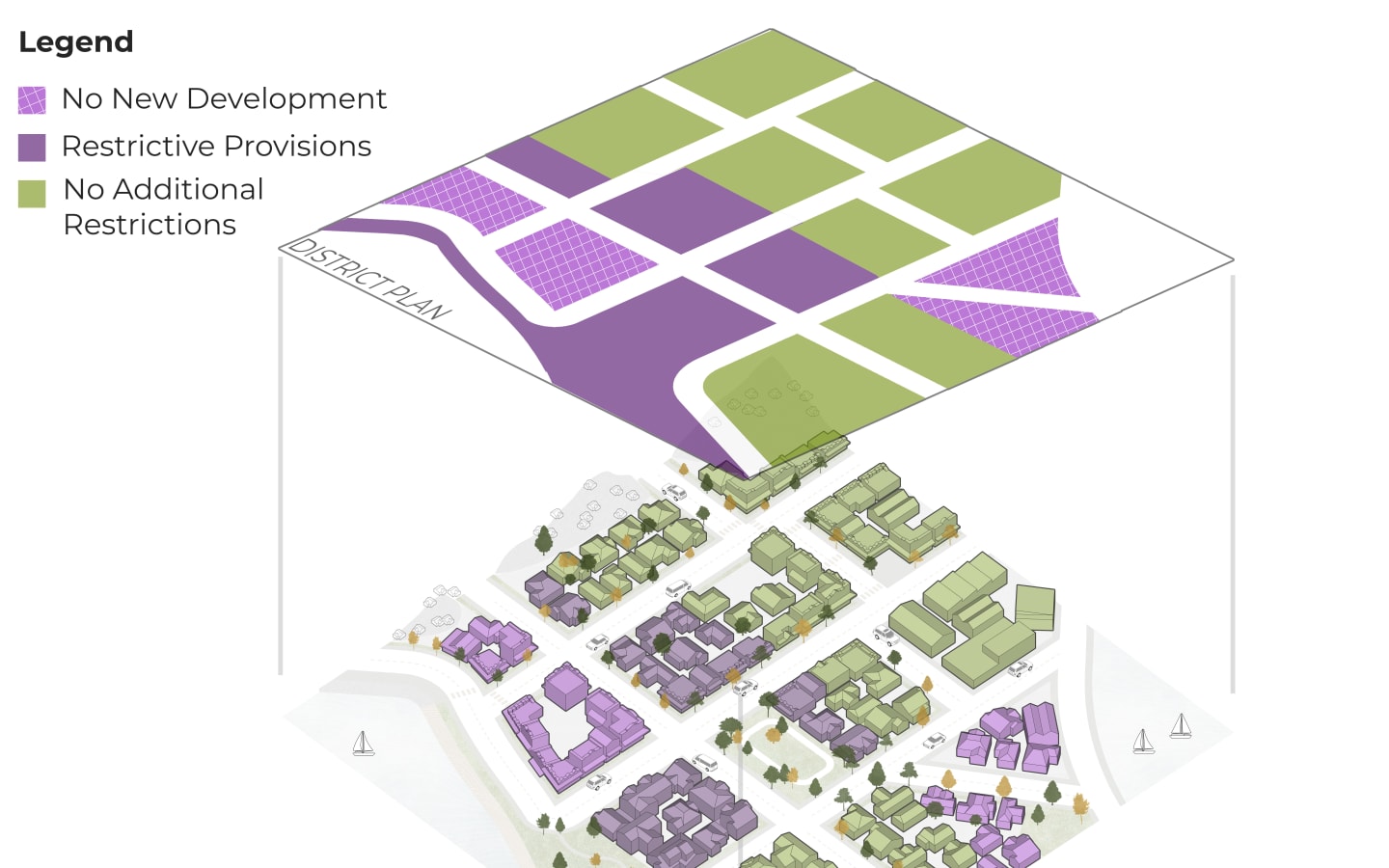
Banning new developments, change of land use or redevelopment is a possible option to avoid exacerbating the risk. An alternative option is making the rules around building and development more strict. Photo: Supplied / Dunedin City Council
Earlier this year, the council confirmed it was investigating a proposal to buy at-risk properties on the open market, gradually acquiring them over the decades to help with their adaptation efforts - and it was seeking government backing.
Rowe said it was still on the table.
"If managing risk and flood risk and making South Dunedin safer and better in the future involves land use change, and 97 percent of the properties out there are currently in private ownership, we're going to need to figure out some way of managing some sort of private transfer of land."
Relationship with the government would be key because some of the options would be beyond what the council and community could afford, Rowe said.
They had not delved into costs yet as there were too many variables, he said.
If the councils signed off the list, it would mean more technical work and community consultation to help narrow down the options over the next two years, working towards creating an adaptation plan by 2026.
